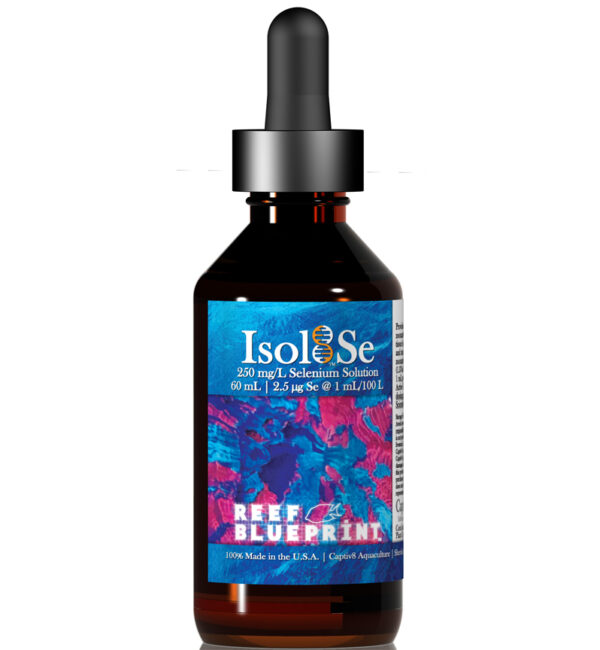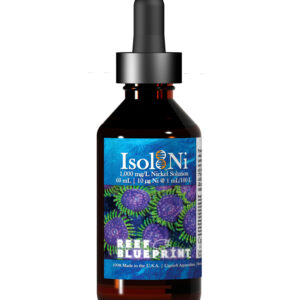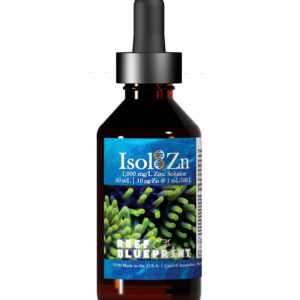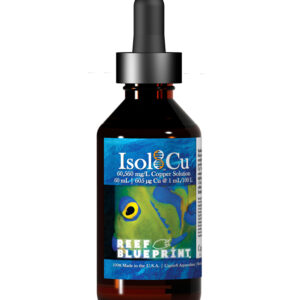Selenium sol’n; 250 ppm. Increases selenium in recirculating seawater systems. Increases primary productivity. Required by photoautotrophs (including zooxanthellae) for antioxidant activity and critical biochemical processes. 1 drop (0.05 mL) per 24.6 gal. (93.2 L), or 1 mL per 492.2 gal. (1,862.9 L), once daily to maintain NSW value for S=35. 250 ppm selenium, derived from sodium selenite (anhydrous source, USP).
Parameter
Selenium
Value
250 ppm
Characteristics
- Required by photoautotrophs (including zooxanthellae) for photosynthesis and nitrogen assimilation (nitrate reduction, nitrogen fixation)
- See ‘Application’ section below for use of this solution vs. Isol8 MT.
- Active Components: Sodium selenite, anhydrous, USP.
Basic Application
- 1 drop (0.05 mL) per 24.6 gallons (93.1 L), or 1 mL per 492.2 gallons (1,862.9 L), provides NSW [Se].
- 1 mL per 26.4 gallons (100 L) increases [Se] by 0.0025 ppm.
- Reference Standard [Se]:
- 1.342×10-4 ppm (S=35.0)
- 1.798×10-4 ppm (S=40.0)
- In established systems, increase [Se] up to 5% of existing ionic value daily, until desired value or reference standard is reached.
Recommended is diluting an appropriate volume of this solution into a larger volume of purified water (with a purity of at least 98%), and applying this diluted solution to the system with an automated dosing system. Dosing frequency is directly proportional to stability of ionic concentrations and, resultantly, continuous cohort biomass growth. A 1 – 10 s drip interval provides adequate ionic stability, and is recommended.
If no automated dosing system is available, then apply solution manually each day. Dosing frequency is directly proportional to stability of ionic concentrations and, resultantly, continuous cohort biomass growth. Dosage volume per 24 h is divided by the dosing frequency*.
It is not recommended that this formulation be dosed fewer than four times weekly.
Reference Standards: 1 mL Isol8 Se diluted in 26.4 gal. (100 L) water yields 2.50 μg/L increase of [Se].
To calculate required solution volume for known parameter differential:
- Multiply net water volume (L) by actual [Se] (ppm).
- Multiply net water volume (L) by desired [Se] (ppm).
- Subtract product of Step 1 from product of Step 2.
- Divide difference of Step 3 by 0.0125. Answer is drops sol’n required to achieve desired [Se] in situ.
Recommended: Do not increase parameter concentration by more than 5% per 24 h period in systems with existing cohorts. Aside from emergencies (e.g. excessive nutrient content in an active system, greatly depressed or excessive salinity, etc.), gradual changes in water composition are generally tolerated better by aquatic organisms than are rapid changes.
*Example: If dosage volume per 24 h = 1 mL and dosing frequency = 4, then dose 0.25 mL per event.






